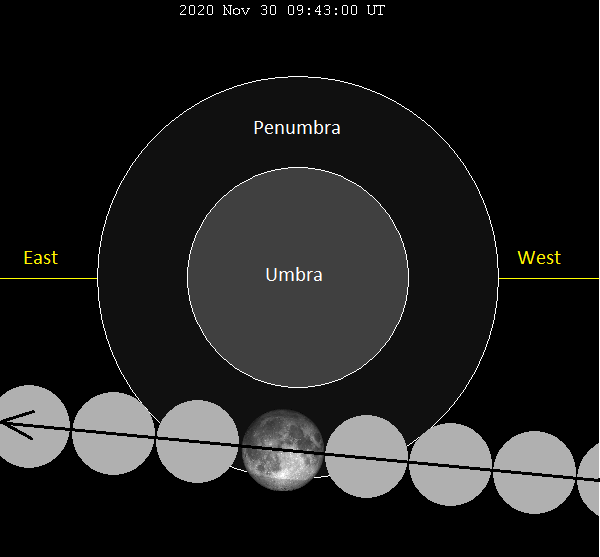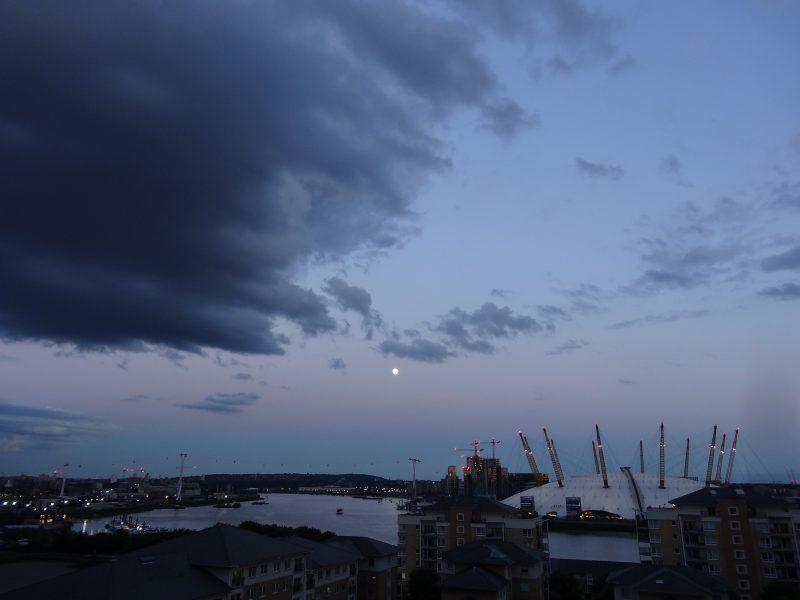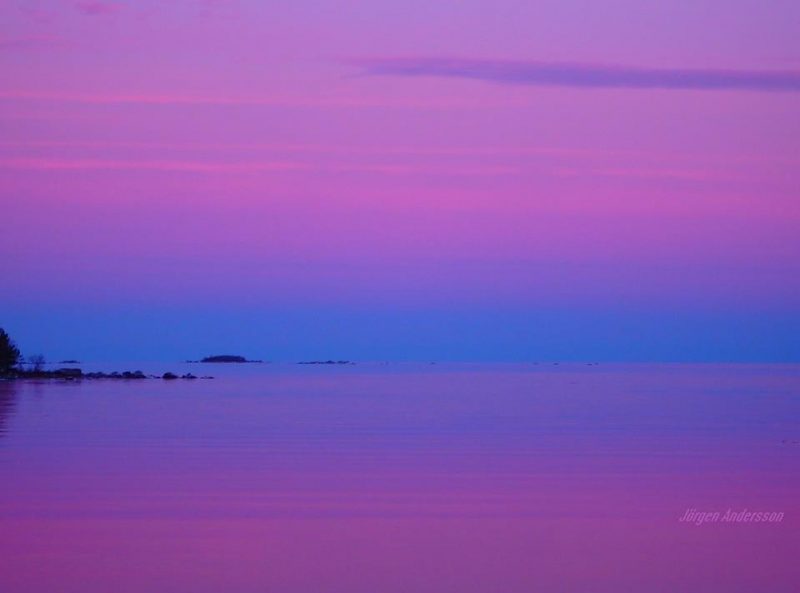Image above: Alexander Kozik in California caught Earth’s shadow (in dark blue) and the Belt of Venus (in pink) beneath the almost-full moon on June 1, 2015.
These next few evenings – November 27 and 28, 2020 – look for Earth’s shadow and the Belt of Venus below the bright waxing gibbous moon. The moon will be high in the east when the sun goes down. An unobstructed horizon and clear sky will increase your chances of seeing the dark blue of the Earth’s shadow capped by the pinkish Belt of Venus, below the moon. You’ll be looking opposite the sunset direction, roughly 30 to 60 minutes after sunset. If you look too soon, your sky will be too bright, but if you look too late, your sky will be too dark.
The moon phase shifts throughout the month, and sometimes you won’t find the moon in the night sky. Earth’s shadow, on the other hand, is more reliable. It can be seen any clear evening, ascending in the eastern sky at the same rate that the sun sets below the western horizon.
The shadow of the Earth is big. You might have to turn your head to see the whole thing. And the shadow is curved, just as the shadow of any round object is curved. Earth’s shadow extends hundreds of thousands of miles into space, so far that it can touch the moon. Whenever that happens, we see an eclipse of the moon.
Read more and see more photos: When can you see Earth’s shadow?

By the way, when the moon turns full on the night of November 29-30, 2020, in North America, the moon will just miss hitting the darkest part of Earth’s shadow, swinging to the south of it. However, the moon will sweep fairly deeply through the Earth’s penumbral shadow, so you might discern a subtle shading on the north side of the moon. The next time that the full moon passes through the Earth’s dark umbral shadow will be May 26, 2021.



Bottom line: Check out Earth’s shadow – in the east after sunset or in the west before sunrise – next time you have a clear sky. You might see it around 30 to 45 minutes after sunset. The pink coloration above the shadow is called the Belt of Venus.











